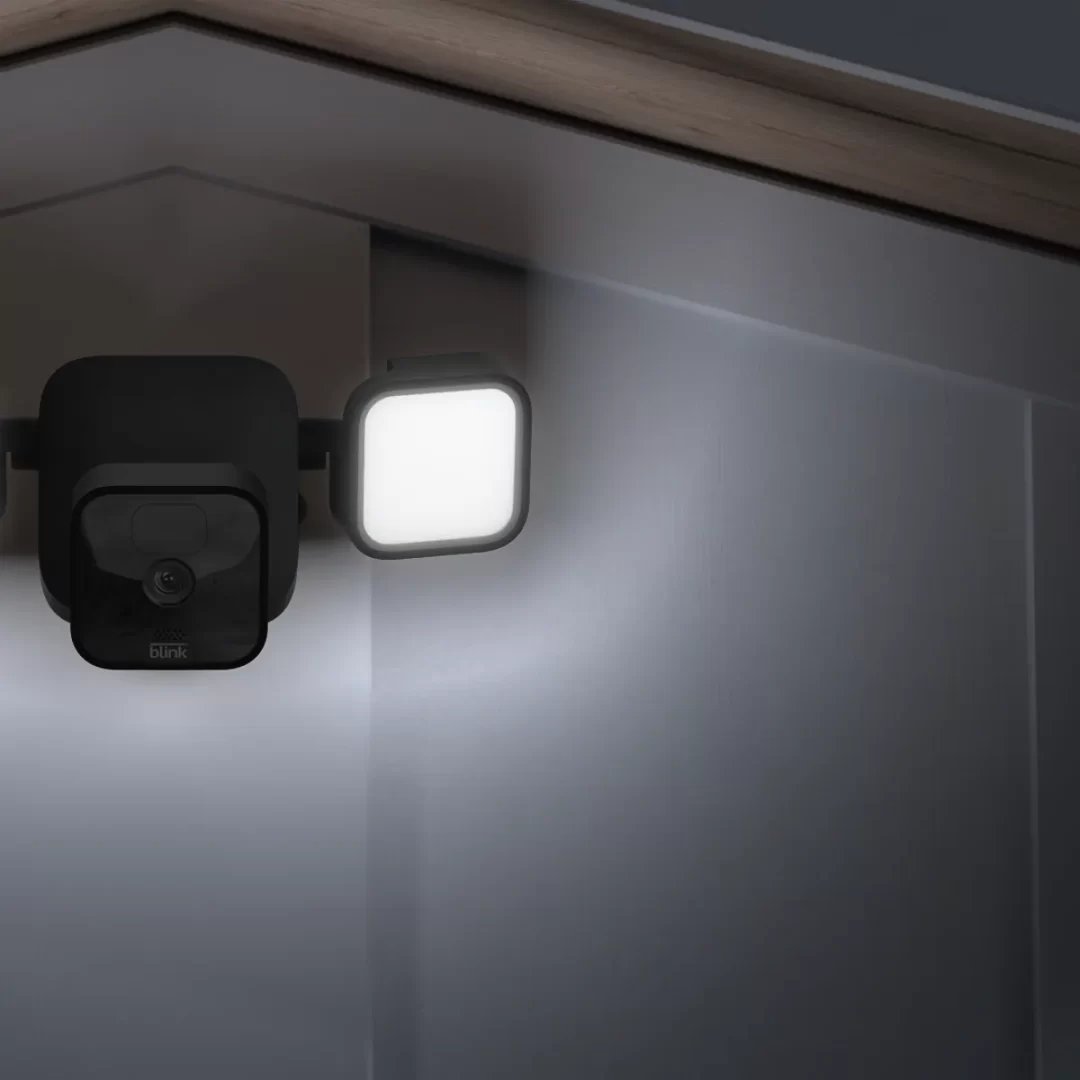Why is My Blink Camera So Dark at Night?
Why is my Blink camera so dark at night? If you’re a Blink camera user, you might have encountered a common issue: your camera appearing dark at night.
In this comprehensive guide, we will explore the reasons behind a dark Blink camera at night and provide you with troubleshooting tips and solutions to resolve the issue.

Why is My Blink Camera So Dark at Night?
Several factors can contribute to a dark Blink camera at night. By understanding these reasons, you can narrow down the issue and take appropriate steps to resolve it. Here are some common causes:
1. Insufficient Ambient Light
Blink cameras rely on available ambient light to capture clear video footage at night. If the area where your camera is installed lacks sufficient lighting, the resulting footage may appear dark.
2. Obstructions and Reflections
Physical obstructions such as branches, walls, or glass can obstruct the camera’s view or cause unwanted reflections. These obstacles can diminish the camera’s ability to capture well-lit footage.
3. Camera Positioning
Incorrect positioning or angling of the camera can affect the quality of the nighttime video. It is crucial to ensure that the camera is appropriately positioned and aligned with the desired field of view.
4. Camera Settings
The camera’s settings, such as brightness, contrast, and exposure, can significantly impact the quality of nighttime video. Incorrectly configured settings can result in dark or washed-out footage.
5. Environmental Conditions
Weather conditions like heavy rain, fog, or snow can affect visibility. These conditions can reduce the available light or create additional obstacles that impact the camera’s performance.
Now that we have identified the common reasons for a dark Blink camera at night, let’s explore some troubleshooting tips and solutions to address this issue effectively.
Troubleshooting Tips to Improve Nighttime Visibility
Here are solutions to some issues you might with Blink camera nighttime visibility:
1. Ensure Proper Power Supply
Make sure your Blink camera is receiving adequate power.
Low battery levels can lead to reduced performance, including compromised nighttime visibility. Check the battery status regularly and replace or recharge them as needed.
2. Clean the Camera Lens
Dust, smudges, or fingerprints on the camera lens can obstruct the incoming light and result in dark footage. Gently clean the lens using a microfiber cloth to ensure maximum light transmission.
3. Inspect and Remove Obstructions
Examine the camera’s surroundings for any physical obstructions that may block the view or cause reflections. Trim branches or reposition the camera to avoid such obstacles.
4. Check Camera Positioning
Verify that the camera is positioned correctly and is capturing the desired field of view. Adjust the camera angle or tilt if necessary to optimize nighttime visibility.
5. Review Camera Settings
Access the Blink camera settings via the Blink app or web portal and review the nighttime settings.
Adjust the brightness, contrast, or exposure settings to enhance nighttime visibility. Experiment with different settings to find the optimal configuration for your specific environment.
6. Update Firmware and Software
Ensure that your Blink camera’s firmware and associated software are up to date. Manufacturers often release updates to address bugs, improve performance, and introduce new features that can enhance nighttime visibility.
By following these troubleshooting tips, you can significantly improve the nighttime visibility of your Blink camera. However, if you’re still facing issues, consider adjusting the camera settings for better night vision.
How to Adjust Camera Settings for Better Night Vision
Blink cameras offer several customizable settings that can be adjusted to improve night vision. Here are some settings you can modify:
1. Brightness: Increase the brightness setting to enhance visibility in low-light conditions. However, be cautious not to set it too high, as it can cause washed-out footage.
2. Contrast: Adjust the contrast setting to improve the distinction between light and dark areas in the frame. Finding the right balance can lead to clearer nighttime footage.
3. Exposure: Fine-tuning the exposure setting can help optimize the camera’s performance in different lighting conditions. Increase or decrease the exposure level to achieve the desired visibility.
4. Infrared (IR) illumination: Blink cameras use infrared LEDs to provide visibility in complete darkness. Check if the IR illumination is functioning correctly and consider adjusting the intensity if needed.
5. Motion detection sensitivity: Lowering the motion detection sensitivity can help reduce false triggers at night, ensuring the camera captures important events without being overwhelmed by minor movements.
Remember to test different settings and observe the resulting video footage to find the configuration that suits your specific needs.
Optimizing Placement and Positioning for Improved Night Vision
The placement and positioning of your Blink camera can significantly impact its nighttime performance. Here are some tips to optimize placement for improved night vision:
1. Avoid Pointing the Camera Directly at Bright Lights
Direct exposure to bright lights can cause the camera to adjust its settings, resulting in dark surroundings. Position the camera away from bright lights or use a shade to prevent direct exposure.
2. Choose Strategic Locations
Identify areas with adequate ambient lighting, such as porch lights or street lamps, for optimal nighttime visibility. Install the camera in a position that benefits from existing light sources.
3. Consider Camera Angles
Experiment with different camera angles to determine the best viewpoint for night vision. Avoid extreme angles that may cause uneven illumination or distorted images.
4. Test Different Locations
If you’re still experiencing poor night vision, try moving the camera to a different location to see if it improves visibility. Sometimes, a slight adjustment in placement can make a significant difference.
By implementing these placement and positioning strategies, you can maximize the potential of your Blink camera’s night vision capabilities.
Using External Lighting to Enhance Nighttime Visibility
If you’ve exhausted all other options and still require better nighttime visibility, consider using external lighting solutions. Here are a few options to explore:
1. Motion-activated Lights
Install motion-activated lights near your Blink camera to provide additional illumination when motion is detected. This can enhance visibility and deter potential intruders.
2. Infrared Illuminators
Some Blink camera models are compatible with external infrared illuminators. These devices emit additional infrared light, further improving visibility in complete darkness.
Check the compatibility of your Blink camera and consider adding an infrared illuminator if needed.
3. Smart Home Lighting Integration
If you have a smart home lighting system, explore the integration options with your Blink camera.
Syncing the camera with smart bulbs or smart switches can enable automated lighting adjustments based on camera activity, enhancing nighttime visibility.
FAQs about Dark Blink Cameras at Night
Here are some frequently asked questions about the night vision capabilities of Blink cameras:
1. Why is my Blink camera so dark at night?
A dark Blink camera at night can be attributed to several factors, such as insufficient ambient light, obstructions, improper camera positioning, incorrect settings, or environmental conditions.
Addressing these factors can help improve nighttime visibility.
2. How can I adjust the brightness of my Blink camera at night?
To adjust the brightness of your Blink camera at night, access the camera settings through the Blink app or web portal.
Increase the brightness setting to enhance visibility, but avoid setting it too high to prevent washed-out footage.
3. Can a weak Wi-Fi signal affect the camera’s nighttime visibility?
Yes, a weak Wi-Fi signal can affect the overall performance of your Blink camera, including nighttime visibility. Ensure that your camera is within range of a strong Wi-Fi signal for optimal performance.
4. What are some alternative solutions to improve night vision?
In addition to the troubleshooting tips mentioned earlier, alternative solutions to improve night vision include using external lighting solutions, adjusting camera angles and positions, or considering infrared illuminators for enhanced visibility in complete darkness.
5. Is it possible to use an infrared illuminator with Blink cameras?
Yes, certain models of Blink cameras are compatible with external infrared illuminators. These illuminators emit additional infrared light, improving nighttime visibility.
Check the compatibility of your Blink camera model and consider adding an infrared illuminator if necessary.
6. Are there any common issues with Blink cameras that can cause dark footage?
Yes, apart from the factors discussed earlier, other common issues that can cause dark footage include low battery levels, outdated firmware or software, and physical obstructions in the camera’s field of view.
Addressing these issues can help resolve dark footage problems.
Conclusion
Having a dark Blink camera at night can be frustrating, but with the right troubleshooting tips and solutions, you can improve nighttime visibility significantly.
By addressing factors such as lighting, camera settings, positioning, and external lighting options, you can enhance the performance of your Blink camera and ensure clear and well-lit footage even in low-light conditions.
Remember to regularly check and maintain your camera to optimize its performance. With these measures in place, you can enjoy peace of mind and reliable surveillance from your Blink camera, day and night.
READ ALSO!!!




